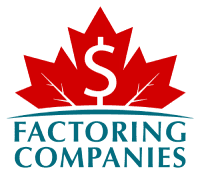
Did you know that 80 percent of the contracts awarded by Public Services and Procurement Canada (PSPC) valued below $1 million are awarded to SMEs, according to the Office of the Procurement Ombud? Many municipalities and provinces also have procurement strategies in place to encourage local or diverse vendors to apply. And while these are often golden opportunities, government contractor payment timelines can be notoriously slow. In this guide, we’ll walk you through the types of businesses that usually qualify, typical payment terms, and how government contract factoring can help keep your business liquid during long payment cycles without adding debt to your balance sheet.
Common Types of Government Contractors in Canada
Contracting with the government happens at every level in Canada, from federal to provincial, territorial, and municipal, and businesses of all sizes can play a role. If your company offers a service or product used by other businesses or institutions, there is a good chance a government buyer exists, too. Below, we’ll take a look at some of the most common industries that get involved in government contract work.
Construction and Infrastructure Companies
Businesses in construction, like general contractors, road builders, and specialty trades, often win public tenders for highways, municipal buildings, water treatment plants, and other infrastructure.
Professional Services Firms
Firms that specialize in areas such as engineering, architecture, legal, auditing, consulting, and project management services fall under the bracket of professional services companies. Governments lean on these outside experts for both short-term and long-term initiatives.
Technology and IT Providers
Software developers, cybersecurity firms, managed IT service providers, and other technology companies supply everything from digital infrastructure to website development and maintenance.
Transportation and Logistics Providers
From snow removal contracts in northern towns to freight hauling for federal agencies, transport and logistics companies regularly support public services.
Manufacturers and Equipment Suppliers
This includes businesses that manufacture or distribute tools, vehicles, machinery, office supplies, safety gear, and more.
Janitorial and Maintenance Companies
Businesses that specialize in janitorial services, as well as maintenance companies such as cleaning services, groundskeeping, waste disposal, and HVAC maintenance, are routinely awarded contracts across municipalities and public agencies.
Healthcare and Support Services
The healthcare industry spans everything from PPE suppliers and staffing agencies to mental health providers contracted by school boards or provincial health authorities.
Creative and Communications Agencies
Graphic designers, video producers, translators, and PR firms often work with government clients on outreach campaigns and community engagement.
Long Payment Cycles Can Occur Even if You’re on Net 30 Terms

While 30-day payment terms are the official benchmark at the federal level and most other governments follow suit, either by law or as a common practice, delays are common, especially if you’re onboarding as a new vendor or submitting to departments that have a multi-step review and approval process. Moreover, payment can take 45 to 60 days or more if there are issues with documentation, purchase order matching, or internal bottlenecks.
For instance, in construction, progress payments are tied to specific milestones or inspections. If a project manager doesn’t sign off in time or if documentation is incomplete, the payment can sit idle. Businesses may not see payment for 90 days or more during change orders or seasonal shutdowns.
Similar challenges may occur for IT and technology vendors. For instance, if your business is implementing software or performing system upgrades, there is often a long validation period. Your invoice may not be considered payable until the full rollout is accepted, which can add weeks to your payment timeline.
When it comes to services, such as staffing or janitorial care, government entities often prefer monthly billing. That means you’re paying upfront for labour and supplies, and the clock does not even start ticking for 30 days after you start work.
In other words, regardless of your industry, there’s a good chance your invoice won’t be paid within 30 days, even if it’s accepted policy or law. These long payment cycles often create challenges for government contractors.
Financial Challenges That Come with Accepting Government Contracts
When you’re waiting weeks or months for payment, you’re not standing still. You’re still delivering, still spending, and still juggling expectations, without the cash in hand to support it. Here’s what that looks like behind the scenes.
Pressure on Payroll and Operations
- Immediate Outflows, No Inflows: You’re paying workers, covering insurance, managing overhead, and buying supplies, long before the first payment arrives.
- Bridge Funding Becomes Necessary: If your accounts receivable cycle is longer than your payroll cycle, you’re likely borrowing to keep the lights on.
Growth Opportunities Put on Hold
- Unable to Take on New Work: You’re tied up financially, so even if a new project comes along, you might not be able to afford the upfront cost.
- Stretched Too Thin: If cash is tight, your team may start cutting corners or turning down valuable opportunities to avoid overcommitting.
Strained Vendor and Supplier Relationships
- Late Payments to Your Own Vendors: Delays upstream create ripple effects. If you pay late, vendors may charge penalties, revoke credit, or stop supplying altogether.
- Damaged Reputation: Even if you explain the delay, repeated slow payments erode trust in your reliability.
Personal Financial Risk for Owners
- Lines of Credit Get Maxed: Many owners use personal credit cards or home equity lines to float expenses while waiting for payments.
- Deferred Salaries and Missed Dividends: Business owners often stop paying themselves altogether or skip dividend draws, which affects their personal stability.
Difficulty Meeting Tax or Compliance Obligations
- GST/HST and Payroll Remittance: These must be paid on time, even if you haven’t received the income associated with the work.
- Penalties and Interest Accrue: CRA does not offer flexibility just because your customer is the government.
Staff Morale and Retention Issues
- Inconsistent Hours or Pay: If you delay payroll or cut hours to conserve cash, team members lose confidence.
- Turnover Rises: Workers may leave for more stable employment, leaving you understaffed when the next job finally kicks off.
Increased Cost of Doing Business
- You Start Paying to Wait: You may rely on credit cards, overdraft protection, or short-term loans, often at high interest rates, to fill the gap.
- Discounts Are Off the Table: You lose the ability to take early-payment discounts from your suppliers or negotiate better terms.
Cash Flow Strategies for Government Contractors Facing Long Payment Cycles

Waiting months for payment from a government client can create serious cash flow strain. To stay operational and positioned for growth, your business needs a proactive strategy that blends financial tools, operational discipline, and contract management.
Build Payment Terms into Your Contract
Contract clarity reduces the risk of bottlenecks and makes it easier to enforce your rights if delays occur.
- Negotiate Clear Payment Triggers: Define what counts as “acceptance” and ensure the timeline begins from that point.
- Include Interest Clauses: In most provinces and territories, interest on late payments is not automatic. Include it in the contract if you want to enforce it.
- Ask for Progress Billing: For longer projects, set up milestone-based billing so you can invoice in stages.
Maintain a Detailed Cash Flow Forecast
Clear forecasting gives you control and lets you make informed decisions, even if the numbers are tight.
- Track Receivables by Client and Project: Know when each payment is expected and flag any that are overdue.
- Model Worst-Case Delays: Plan for the possibility that payments could take longer than expected.
- Time Your Expenses Strategically: Hold off on purchasing new equipment or placing large supplier orders until you know when cash is coming in.
Establish a Business Line of Credit
Access to credit gives you flexibility without the high costs of credit cards or short-term loans.
- Use it to Bridge Gaps, Not Fund Operations: A line of credit can help cover payroll or supplier payments if receivables are running late.
- Negotiate Terms in Advance: Set this up before you need it. Trying to secure credit in the middle of a cash crunch rarely ends well.
Build Up an Operating Reserve
A financial buffer turns unexpected delays into manageable hiccups instead of emergencies.
- Set Aside a Percentage of Every Payment: If cash allows, reserve ten to 20 percent of each contract payment in a separate account.
- Use it for Payroll or Tax Remittance During Gaps: These are non-negotiable expenses, even when clients pay late.
Consider Invoice Factoring for Small Businesses
Factoring smooths out long receivable cycles without creating debt or requiring collateral.
- Convert Receivables into Immediate Cash: A factoring company buys your approved government invoices and gives you most of the money up front.
- Streamline Your Collections: The factoring company takes over your collections process, saving you the time and effort of chasing invoices.
Diversify Revenue Streams
Diversification reduces the risk of one delayed client or one late cheque bringing your operations to a halt.
- Balance Government Contracts with Private Clients: Private-sector clients may pay faster, or be open to up-front deposits.
- Offer Add-On Services: Maintenance, training, or consulting services can create smaller, faster-paying revenue streams during the wait.
Communicate with Clients Early and Often
Payment often gets delayed by bureaucracy, not bad intentions. A well-timed check-in keeps the process moving.
- Follow Up on Deliverables and Invoicing: Make sure your invoice is received by the right department, and confirm that acceptance has been logged.
- Stay on Their Radar: Professional follow-ups help prevent your invoice from being lost in the shuffle of internal approvals.
The Ins and Outs of Factoring for Government Contractors
As we briefly touched on earlier, if you’re dealing with long payment cycles from government clients, factoring is often one of the most efficient, scalable solutions. It doesn’t require you to take on debt, it grows with your receivables, and, most importantly, it’s based on the credit strength of your client, not your business.
Factoring is a Strong Fit for Government Contractors
Government receivables are among the most desirable assets in the factoring world, and that can help you in many ways.
- Government Clients Are Considered Very Low Risk: Provinces, municipalities, and federal agencies are stable payers, even if they’re slow. That means you’re likely to get approved, and the factor may offer better rates.
- Factoring Companies Understand How Public Procurement Works: Many specialize in it. They know about delivery approvals, milestone payments, and departmental payment workflows. You won’t need to explain what net 30 really means.
- You Can Unlock Capital Without Selling Equity or Taking on Long-Term Debt: That gives you the flexibility to grow your business on your terms.
The Factoring Approval Process for Government Contractors is Fast and Easy
Approval for factoring is simpler and faster than traditional government contract financing. Let’s take a quick look at the process.
1. Initial Application
Submit basic business info, such as your legal name, business number, ownership details, and history of operations, and provide sample invoices and contracts. The factor will want to see who you invoice, what terms you’re operating under, and how approvals are documented.
2. Credit Review
The factor evaluates the creditworthiness of your client, not your business. Since your client is a government entity, this part is usually straightforward.
3. Due Diligence and Setup
They’ll verify how your invoicing works, and you’ll sign a factoring agreement that outlines advance rates, fees, reserve policies, and terms. Most contractors are approved within three to five business days, though some factoring companies can approve you on the same day.
How Government Invoice Factoring Works, Step by Step
Once you’re approved, factoring becomes a simple cycle.
1. You Complete the Work
You deliver the product or service to the government client and get confirmation of acceptance.
2. You Submit the Invoice to the Factor
Unless the factor prepares invoices for you, you’ll send a copy of the invoice you generate to your factor along with any required backup, such as a delivery confirmation or purchase order.
3. You Receive an Advance
This is usually 80 to 90 percent of the invoice value, and it typically reaches your bank account within one to two business days.
4. The Government Pays the Factor Directly
This is arranged through a Notice of Assignment, which simply tells the government to route payment to the factoring company. You’re still the vendor of record.
5. The Factor Sends You the Balance
Once the government pays, you get the remainder minus the agreed fee.
This process repeats with each new invoice. It’s often called spot factoring when you’re submitting individual invoices as opposed to whole ledger factoring or bulk factoring, if you factor everything or more.
Factoring Fees: What to Expect
One of the greatest concerns factoring companies have when accepting invoices is risk, and that plays heavily into the fees you pay. As a government contractor, you’re payer’s risk is incredibly low, so you’ll benefit from some of the lowest factoring fees possible. Let’s take a quick look at how it usually works out.
Typical Fee Structure
Discount Rate: The fee retained by a factor is generally between one and five percent of the invoice’s value. However, this is determined by considerations such as your invoicing volume, value, size, and risk. Because government agencies pose very little risk, you’ll likely fall on the lower end here and see rates between one and two percent.
Duration-Based Fees: Some factors charge fees in tiers, like one percent for the first 30 days, then an additional one percent for every ten or 15 days unpaid.
Other Charges: You may also see setup or onboarding fees, wire transfer fees, credit check fees (if you invoice private-sector clients too), and other line items.
How to Keep Factoring Costs Lower
- Invoice Large Amounts: Bigger invoices often mean lower rates.
- Use Factoring Consistently: Some firms offer volume-based discounts.
- Submit Complete Documentation: Invoices with proof of acceptance, purchase orders, and delivery receipts get processed faster, reducing the time your factor holds the risk.
What to Watch for in Your Factoring Contract
- Commitment Lengths: Some factoring contracts lock you in for six to twelve months. Look for flexibility if you only need factoring occasionally.
- Reserve Release Timing: Ask how long it takes to get the balance once the government pays. Some factors wait a few days; others release funds same day.
- Notice of Assignment Language: Some agencies require special wording. Your factor should help with this as part of the Notice of Assignment process.
Get Fast Funding for Government Invoices Through Factoring
If it sounds like factoring could help your business manage long government payment cycles more effectively, the next step is to talk to a factoring specialist who can walk you through all the details. Request a complimentary quote to get started.
FAQs on Government Contract Factoring
Is non-recourse factoring for government contracts an option?
Yes, non-recourse factoring is sometimes available for government contracts, though it’s usually unnecessary. In a non-recourse agreement, the factor absorbs the loss under specific circumstances, such as if the client goes bankrupt. However, because government agencies pose little risk of non-payment and non-recourse comes with slightly higher costs, it’s often not justified. However, if you believe that your business could benefit from non-recourse factoring, talk with your factoring company before signing the agreement.
Am I limited to net-30 invoice funding with factoring, or can I do longer terms if the agency I’m working for requires it?
You’re not limited to net-30 invoices. Factoring can accommodate longer terms, such as net 45, 60, or even 90 days, depending on the contract. Invoices from government agencies with extended payment cycles are still eligible, provided the terms are clearly documented and the agency is approved by the factor.
Why are cash flow solutions for contractors necessary when the government is a good payer?
Even though government clients are reliable, their payment cycles can be long, often 30 to 90 days. Contractors still need to cover payroll, materials, and overhead in the meantime. Cash flow solutions like factoring fill this gap, ensuring your business can operate smoothly while waiting for payment.
How does factoring free up working capital for government suppliers?
Factoring unlocks cash tied up in approved government invoices by advancing funds within one to two business days. This gives suppliers immediate working capital for payroll, equipment, or new projects without waiting weeks or months for payment from government agencies.
How can I qualify for business financing for federal contractors?
Qualifying typically involves showing that you have active or pending federal contracts and can provide proper documentation, such as purchase orders or signed agreements. Lenders and factoring companies focus more on the government’s creditworthiness than on yours, which can make approval easier than with traditional loans.
How can I get paid faster on government contracts?
To get paid faster, ensure your invoice is complete, includes the correct purchase order, and is sent to the right department. Some contractors also build payment terms into the contract. For ongoing delays, invoice factoring can provide advance funding while you wait for government payment.
What financing options are available for government contractors waiting on payment?
Options include lines of credit, short-term loans, and invoice factoring. Factoring is often preferred because approval is based on the government’s credit, not yours. It offers quick access to working capital without adding debt, helping you cover payroll, materials, or new projects while awaiting payment.
Can I use invoice factoring for federal or provincial contracts?
Yes, most factoring companies accept federal, provincial, and municipal government invoices, as long as the work is complete and the agency has accepted delivery. Government receivables are considered low risk, so contractors often receive favourable rates and flexible terms from factoring providers.
What’s the best way to manage cash flow during long government payment cycles?
Use a mix of forecasting, milestone billing, and financing tools like factoring. Maintaining a cash flow buffer helps, but factoring is especially useful when you need to cover expenses before receiving payment. It frees up funds tied to approved invoices without taking on debt.
Is factoring worth it for government suppliers with net 60 or net 90 terms?
Yes, especially if long payment terms are straining your ability to meet payroll or take on new work. Factoring lets you access most of the invoice value upfront, so you’re not waiting months for payment. It’s a flexible, low-risk option for contractors working with reliable agencies.

About Factoring Companies Canada
Related Articles
Get an instant factoring estimate
Factoring results estimation is based on the total dollar value of your invoices.
The actual rates may differ.
CLAIM YOUR FREE FACTORING QUOTE TODAY!
PREFER TO TALK?
You can reach us at
1-866-477-1778
Get an instant factoring estimate
Factoring results estimation is based on the total dollar value of your invoices.
The actual rates may differ.
CLAIM YOUR FREE FACTORING QUOTE TODAY!
PREFER TO TALK? You can reach us at 1-866-477-1778











